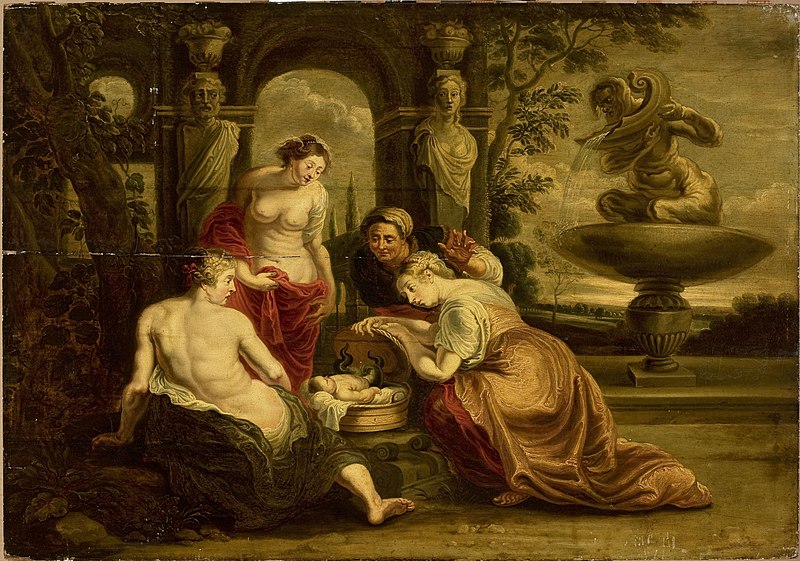In the heart of ancient Greek lore, the tale of Erichthonius, a legendary early king of Athens, unfolds with a blend of earthly reality and divine intervention. His narrative is not just a tale of kingship, but a bridge between the mortal realm and the divine, showcasing the intertwined fate of gods and men.
His story begins even before his birth, with a clash of desires between Hephaestus, the craftsman god, and Athena, the goddess of wisdom.
Erichthonius Key Facts
| Parents | Hephaestus and Gaia (Earth) |
| Partners | Praxithea |
| Siblings | None |
| Offspring | Pandion I |
| Other names | Erechtheus |
| Roman name | Erichthonius |
| Best Known Myth | Birth and Kingship of Athens |
Name and Etymology
The name Erichthonius is derived from the ancient Greek words “ἐρι-” (eri-) meaning “woolly”, and “χθών” (chthōn) meaning “earth”, which could be interpreted as “woolly earth” or “rich in earth”. This name reflects his unique birth from the earth, a characteristic that sets him apart from other heroes of his time. The Roman counterpart of Erichthonius retains the same name, showcasing a rare consistency in the transference of Greek myths to Roman lore.
Erichthonius was also known as Erechtheus, a name that was often used interchangeably, although some ancient sources hint at them being separate entities. The epithets associated with Erichthonius often highlight his divine lineage and his close association with the city of Athens, which he was believed to have founded or significantly contributed to its early establishment.
The etymology of Erichthonius’s name and his alternative name, Erechtheus, provides a glimpse into the hero’s unique narrative and his profound connection to the land of Athens. His names are not just mere labels, but a reflection of his legacy and his enduring influence in the annals of Greek mythology.

Erichthonius Family and Relationships
Erichthonius’s lineage is a blend of the divine and the earthly. Born of Hephaestus and Gaia, the Earth, his existence was a result of unrequited love and divine intervention. Hephaestus, smitten by Athena, attempted to woo her, but his advances were spurned. In the ensuing struggle, his seed fell upon the earth, and from it sprang Erichthonius, a being of both divine and earthly essence.
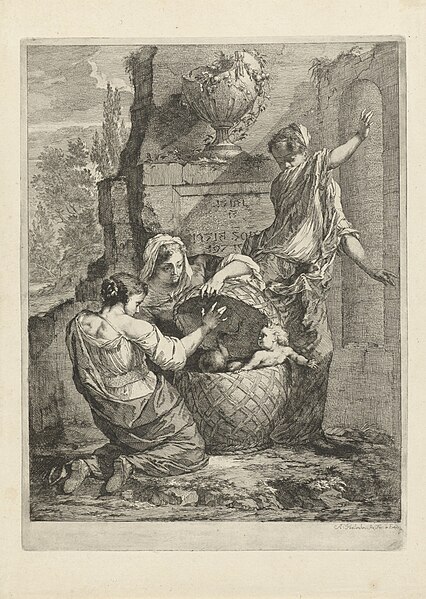
The circumstances of his birth were kept a secret, and baby Erichthonius was placed in a chest and handed over to Athena. The goddess, in turn, entrusted the chest to the daughters of Cecrops, the king of Athens, with a stern warning not to open it. Curiosity, however, got the better of them, and upon opening the chest, they were met with the sight of Erichthonius in either a serpentine form or alongside a serpent, a sight that drove them to madness, leading to their tragic demise.
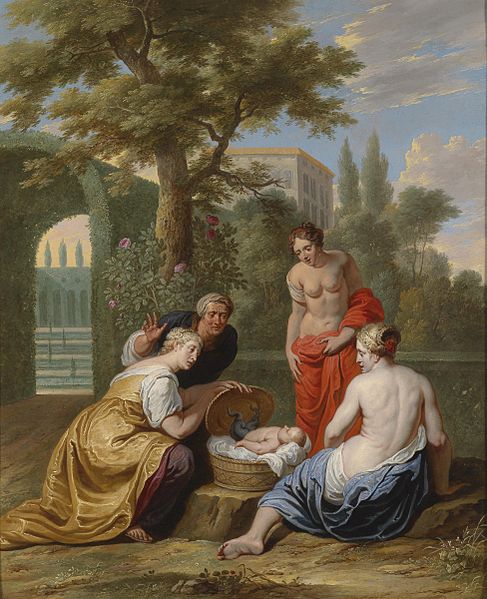
Erichthonius’s life was marked by solitude, yet he found companionship in Praxithea, with whom he fathered a son, Pandion I. His reign as a king was noted for its wisdom and prosperity, a reflection of his divine lineage and his earthly prudence. His narrative is a blend of love, tragedy, and the inexorable bond between the mortal realm and the divine.

Myths about Erichthonius
Birth and Early Life
The narrative of Erichthonius’s birth is a captivating tale of divine desire and earthly creation. It begins with Hephaestus, the god of fire and forge, becoming infatuated with Athena, the virgin goddess of wisdom. Overcome by desire, Hephaestus attempts to unite with Athena, but she evades him. In the struggle, Hephaestus’s seed falls upon the earth, and from the fertile soil, Erichthonius is born, embodying a union of divine essence and earthly matter.
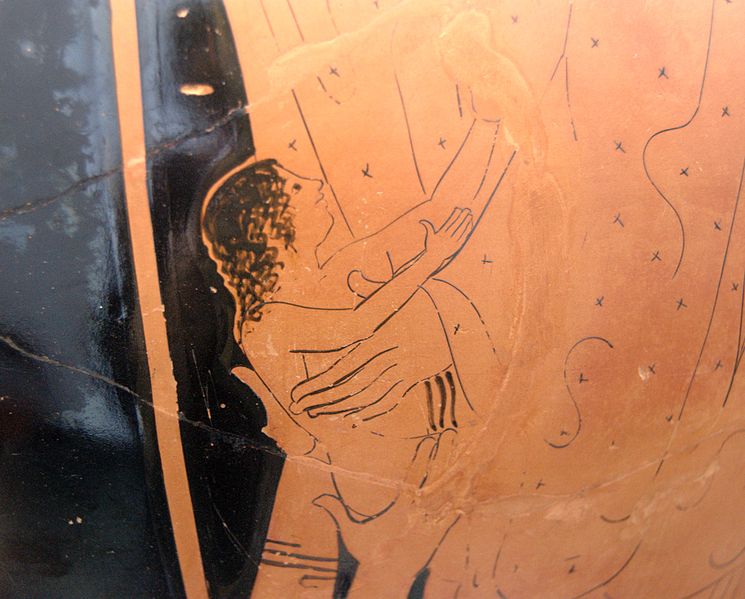
Athena, recognizing the unique nature of Erichthonius, decides to nurture the child. She places him in a chest, sealing it to conceal the secret of his birth. The chest is then entrusted to the daughters of Cecrops, the king of Athens, with a strict admonition not to open it. However, overcome by curiosity, the sisters break the seal and open the chest. The sight that greets them—Erichthonius in a serpentine form or alongside a serpent—drives them to madness, leading to their tragic demise as they hurl themselves off the Acropolis.
Kingship of Athens
The tale unfolds with the mysterious birth of Erichthonius, swiftly moving to his rise as the king of Athens. Under his leadership, Athens blossoms into a period of prosperity and cultural growth. Erichthonius introduces many innovations, notably the quadriga, a four-horse chariot, and establishes the Panathenaic Festival to honor Athena. His reign strengthens Athens’ bond with Athena, whose guidance and protection significantly contribute to the city’s prosperity.
Erichthonius’s rule showcased divine favor and earthly wisdom, setting a strong precedent. This legacy of prosperity now shines in Athenian history. His governance not only fortified the bond between Athens and the divine, but also paved a solid foundation for future rulers of the city.
Lasting Legacy and Notable Descendants
Erichthonius’s legacy extends beyond his reign, with his descendants playing significant roles in the narrative of Greek mythology and the history of Athens. His son, Pandion I, succeeds him as king, continuing the lineage of wise and prosperous rulership. The lineage of Erichthonius also leads to illustrious figures like Theseus, the heroic king who would later become synonymous with the glory of Athens.
The tale of Erichthonius actively intertwines a personal narrative with a foundational myth. Furthermore, it is blending the fate of a city with the divine. His descendants, carrying his legacy, shape Athens’ destiny, elevating Erichthonius to a revered figure in Greek mythology and Athenian history. Through his story, a strong bond between the divine, the earthly, and ancient Athens’ heroic legacy vividly comes to life.
The Serpent Connection
The motif of the serpent is a recurring theme in the tale of Erichthonius. From his birth, where he was either found in a serpentine form or alongside a serpent, to his kingship, where the serpent was considered a divine symbol of protection and wisdom, the serpent motif is an integral part of his narrative.
The serpent, often considered a symbol of rebirth, transformation, and protection in ancient Greek culture, was closely associated with Erichthonius. It was seen as a divine guardian, symboling his unique birth and his close association with the goddess Athena.
The intertwining of the serpent motif in Erichthonius’s tale is a reflection of the profound symbiotic relationship between the mortal and the divine, a relationship that is often manifested through symbolic representations in Greek mythology.
Depiction And Characteristics
Erichthonius, as depicted through ancient texts and myths, embodies wisdom, prudence, and a strong sense of duty. His reign as king notably brought about prosperity, justice, and a deep reverence for the gods, especially Athena. Moreover, his actions demonstrate a profound understanding of the delicate balance between the divine and the earthly, a balance that notably characterized his kingship.
The symbols associated with Erichthonius, including the serpent and the olive tree, are profound representations of his narrative. The olive tree, believed to have been introduced by him, symbolizes peace, wisdom, and prosperity, attributes that were the cornerstone of his reign.
Representations Of Erichthonius In Art
One notable artwork is the Erechtheion, a temple on the Acropolis of Athens dedicated to both Athena and Erichthonius (Erechtheus). This is not just a structure, but a symbol of the bond between Erichthonius, Athena, and the city of Athens. Its intricate design and sacred artifacts within it are a testament to the hero’s enduring legacy and his divine patronage.
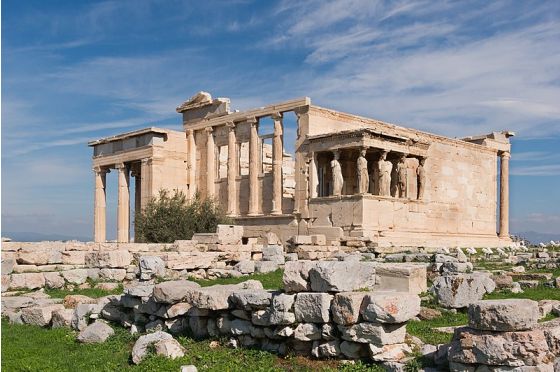
The depiction of Erichthonius in art is not just a mere artistic expression, but a profound exploration of his narrative.
Mentions in Ancient Texts
Erichthonius’s tale finds mention in various ancient texts, each offering a unique perspective on his narrative. His story is not just a mere myth however, but a profound exploration of the intricate interplay between the divine and the earthly.
Homer’s Iliad
Homer, who lived during the 8th or 7th century BC, briefly mentions Erichthonius in his epic poem, the Iliad. This ancient text highlights Erichthonius’s lineage and his close association with the goddess Athena. Furthermore offering a glimpse into his divine heritage and his earthly reign. Through the poetic verses of Homer, the hero’s tale finds a voice, echoing through the corridors of time.
Ovid’s Metamorphoses
The Roman poet Ovid lived during the 1st century BC. He narrates the tale of Erichthonius’s birth in his magnum opus, Metamorphoses. This narrative explores the unrequited love of Hephaestus for Athena and the ensuing birth of Erichthonius from the earth. This is offering a poetic exploration of the hero’s unique lineage. Ovid’s eloquent verses provide a poetic rendition of Erichthonius’s narrative, resonating with the timeless allure of Greek mythology.
Apollodorus’s Bibliotheca
Apollodorus was a Greek scholar and author from the 2nd century BC. He mentions Erichthonius in his work The Bibliotheca, a comprehensive compilation of Greek myths and legends. In this text, the unique birth and the early life of Erichthonius are detailed. This is also providing a structured narrative of his lineage and his ascent to the throne of Athens.
Pausanias’s Description of Greece
Pausanias, was a Greek traveler and geographer of the 2nd century AD. His work “Description of Greece”, provides an account of various places in Greece intertwined with mythological tales. He mentions the Erechtheion, a temple on the Acropolis of Athens dedicated to both Athena and Erichthonius (Erechtheus). He also provides a detailed description of the temple and its significance in honoring the hero king.
In “Description of Greece”, Pausanias quotes: “The Athenians say that Erechtheus was born from the Earth, and in the fight against the Eleusinians was helped by Athena, who was his sister, but on the father’s side only.” This quote encapsulates the divine lineage of Erichthonius and his close association with Athena.
Frequently Asked Questions
Erichthonius was born from the earth (Gaia) when Hephaestus’ seed fell upon the ground after Athena spurned his advances.
The serpent is a recurring motif in Erichthonius’s narrative. It is symbolizing his divine lineage, protection, and his close association with the goddess Athena.
Erichthonius was credited with many cultural and religious innovations in Athens. This included the Panathenaic Festival honoring Athena, as well as the introduction of the olive tree, symbolizing peace and prosperity.
Erichthonius is often depicted in a serpentine form or alongside a serpent in ancient Greek art. Furthermore symbolizing his unique birth and his dual nature as both divine and earthly.
Athena played a significant role in Erichthonius’s life. She guarded him after his birth, and later guided him during his reign as king of Athens.
Erichthonius was not directly involved in the Trojan War. However, the cultural innovations he introduced in Athens played a significant role in shaping the events leading to the conflict.
Featured Image Credit: Peter Paul Rubens, Public domain, via Wikimedia Commons

